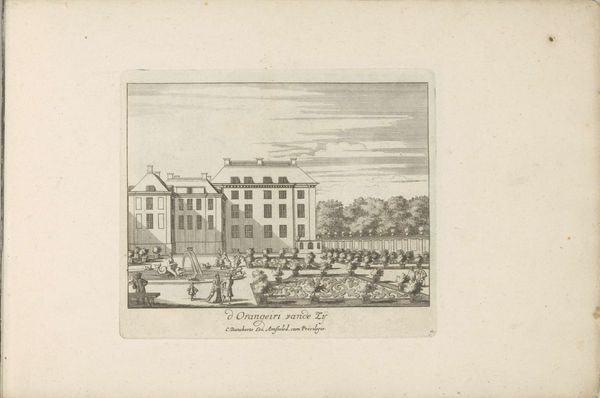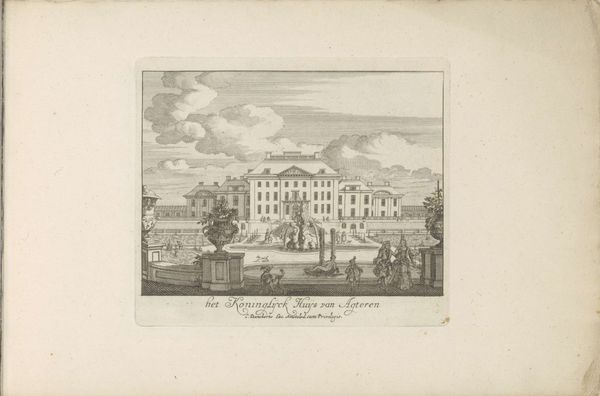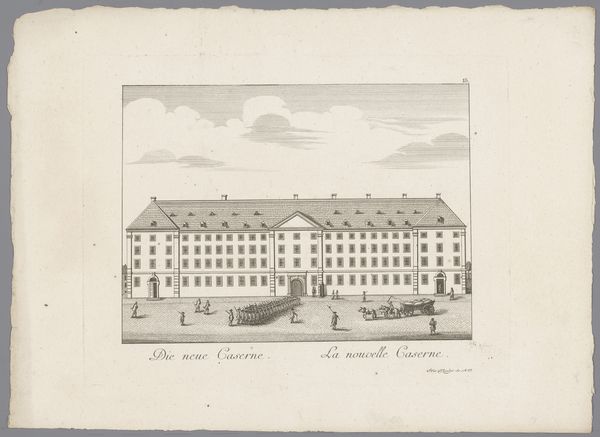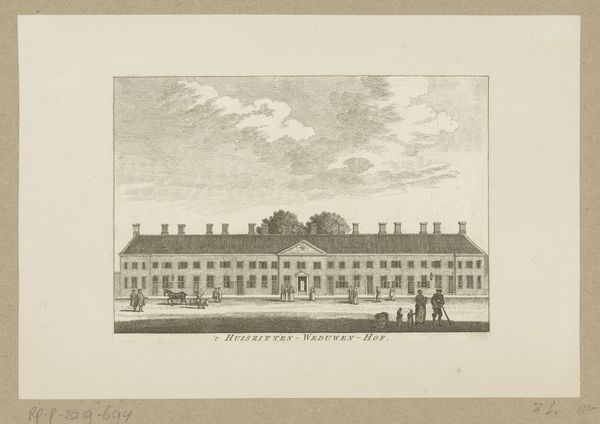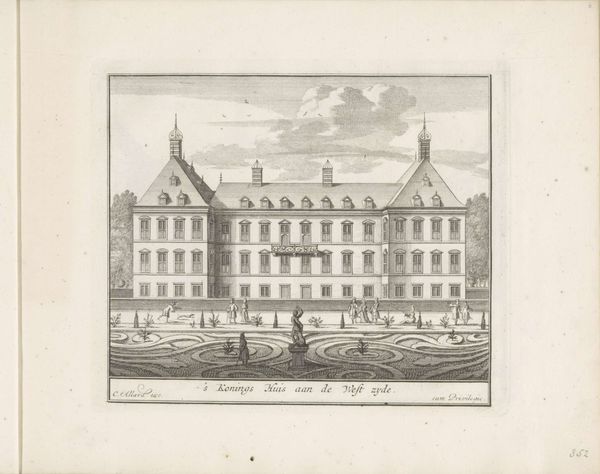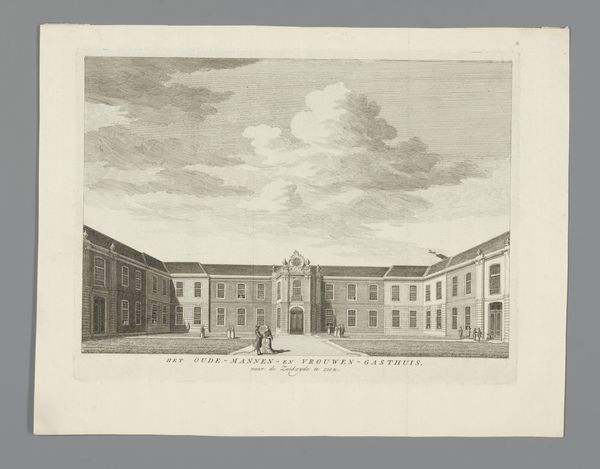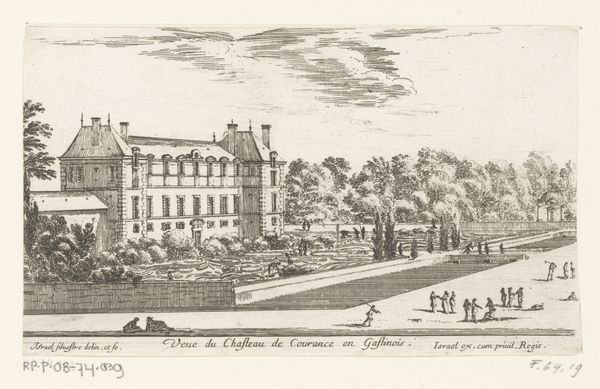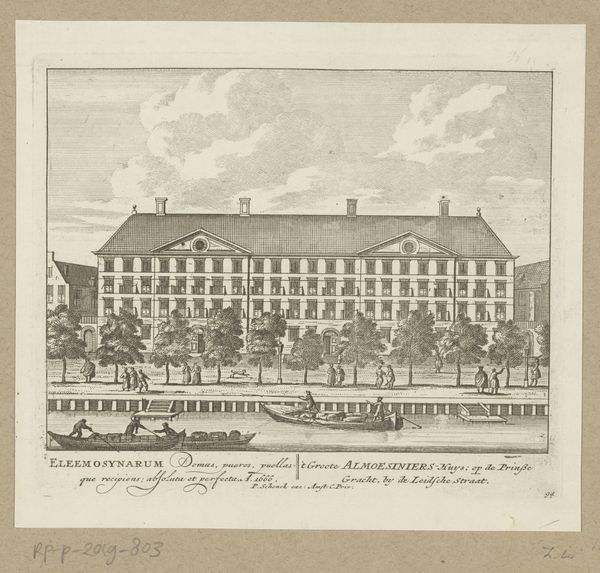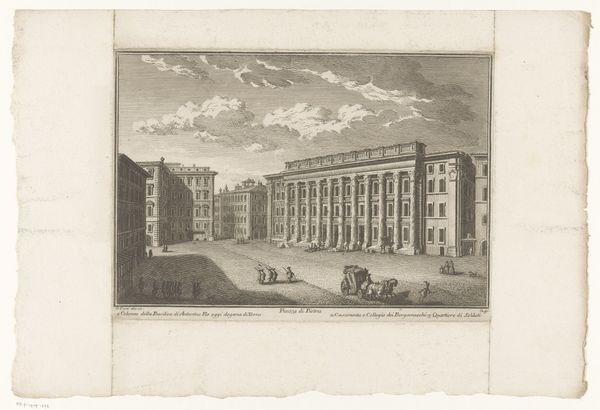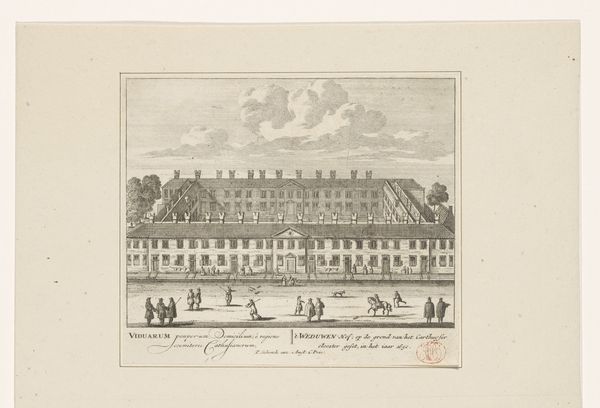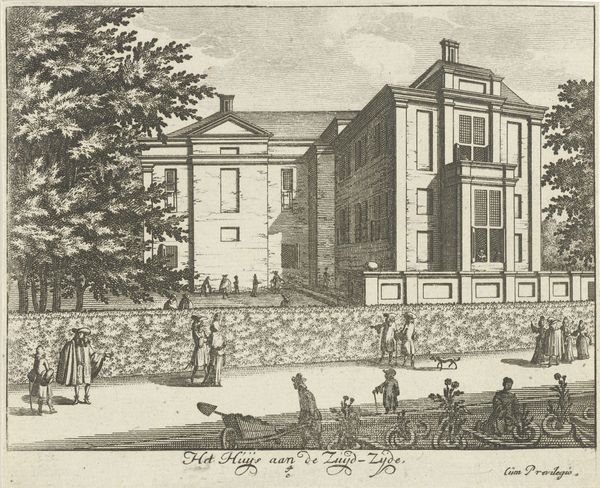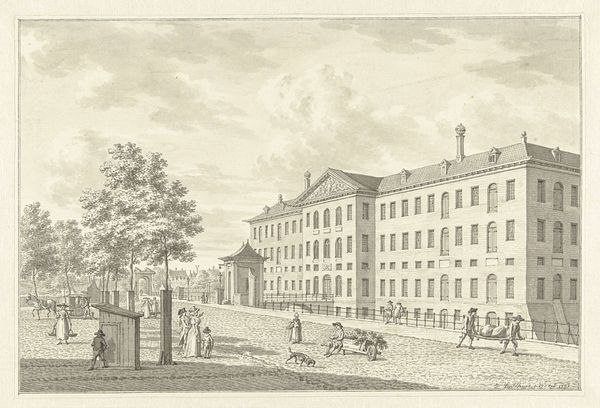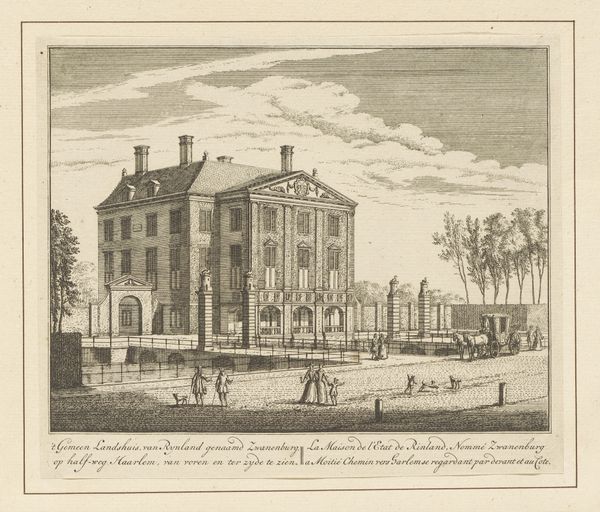
print, engraving, architecture
#
baroque
#
dutch-golden-age
#
ink paper printed
# print
#
old engraving style
#
landscape
#
cityscape
#
engraving
#
architecture
Dimensions: height 143 mm, width 180 mm
Copyright: Rijks Museum: Open Domain
Curator: The image before us depicts Paleis Het Loo, as captured in an engraving by Cornelis Danckerts II, sometime between 1696 and 1718. The print offers a precise, almost architectural view of the palace. Editor: It feels so…orderly. Utterly controlled. Not just the palace itself, but the little figures populating the courtyard—all so neatly placed, like pieces on a chessboard. What does it whisper about the society that built it? Curator: A great deal. Het Loo was a symbol of Dutch power and prosperity during the Golden Age, meant to impress both local subjects and visiting dignitaries. The engraving, therefore, served to disseminate that image, reinforcing the status of the House of Orange. Editor: So, pure PR? It almost makes the place feel cold, despite all the activity in the foreground. All those carriages… I bet they hid some messy secrets. I wonder who resided inside! Were they happy inside that palace, surrounded by formality? Curator: While designed to project an image of regal authority, the print would have been acquired as souvenirs as well. The building itself reflected the architectural tastes of the time, an embrace of symmetry, and a reflection of Baroque sensibilities. The placement of a water fountain at the palace's doorstep certainly conveyed luxury and abundant resources. Editor: It makes you think about how spaces shape lives, doesn’t it? You know, the artist has paid great attention to details, even in the tiny figures around the fountain! Curator: Danckerts’ mastery of the engraving technique allowed him to convey depth and texture despite the monochromatic palette. Each line carefully etched to convey stone, water, and the attire of the figures adds complexity. Editor: Ultimately, I can’t help but think of how temporary this image of power turned out to be, looking at it now from so many centuries removed. Curator: That tension between permanence and impermanence is the heart of history, isn’t it? And perhaps also of art.
Comments
No comments
Be the first to comment and join the conversation on the ultimate creative platform.
